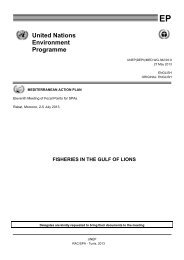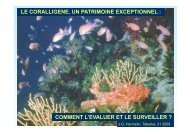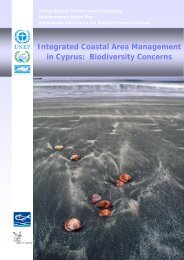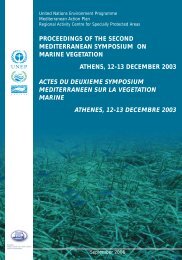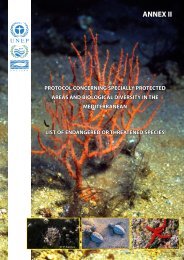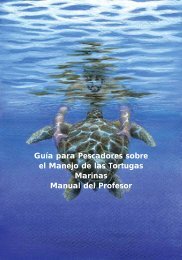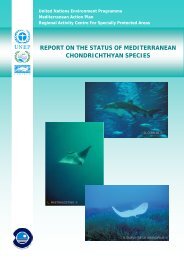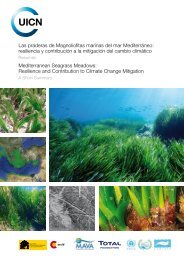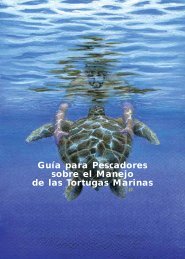Plan d'Action pour la conservation des espèces d'oiseaux inscrites ...
Plan d'Action pour la conservation des espèces d'oiseaux inscrites ...
Plan d'Action pour la conservation des espèces d'oiseaux inscrites ...
You also want an ePaper? Increase the reach of your titles
YUMPU automatically turns print PDFs into web optimized ePapers that Google loves.
There are still many gaps in the knowledge of coastal and<br />
pe<strong>la</strong>gic birds and their habitats in the Mediterranean,<br />
particu<strong>la</strong>rly seabird movements and their distribution at<br />
sea. There is an urgent need for mapping of breeding,<br />
feeding, moulting and wintering areas of pe<strong>la</strong>gic birds in<br />
the Mediterranean.<br />
1.4 Geographical scope of the p<strong>la</strong>n<br />
The p<strong>la</strong>n covers the sea and countries with a Mediterranean<br />
coastline, excluding the parts of these countries, which are<br />
not of a Mediterranean bio-climate. Some of the species,<br />
such as Balearic Shearwater Puffinus mauretanicus and<br />
Levantin Shearwater Puffinus yelkouan, have a restricted<br />
breeding range in the Mediterranean. Others, such as<br />
Eleonora’s Falcon Falco eleonorae, have migration routes<br />
and/or wintering areas outside the Mediterranean. Other<br />
species, such as White Pelican Pelecanus onocrotalus,<br />
Greater F<strong>la</strong>mingo Phoenicopterus ruber, Osprey Pandion<br />
haliaetus, Sandwich Tern Sterna sandvicensis and Little Tern<br />
Sterna albifrons, are wi<strong>des</strong>pread elsewhere, but have a<br />
limited range and/or a small popu<strong>la</strong>tion in the<br />
Mediterranean. For one of the species, Slender-billed Curlew<br />
Numenius tenuirostris, which is a globally endangered<br />
species, the Mediterranean is part of its wintering range.<br />
2. ACTION PLAN OBJECTIVES AND TARGETS<br />
2.1 The main objective<br />
The main purpose of the Action <strong>P<strong>la</strong>n</strong> is to maintain and/or<br />
restore the popu<strong>la</strong>tion levels of bird species in the SPA<br />
Protocol’s Annex II to a favourable <strong>conservation</strong> status<br />
and to ensure their long-term <strong>conservation</strong>.<br />
2.2 Other objectives<br />
1. To share knowledge and expertise between<br />
Mediterranean countries.<br />
2. To co-ordinate efforts among Mediterranean countries<br />
and other relevant initiatives and agreements, so as to<br />
ensure the implementation of these activities.<br />
3. To encourage a synergetic approach among<br />
Mediterranean countries in the protection of these bird<br />
species and their habitats.<br />
4. To encourage research to fill the many gaps in knowledge<br />
of coastal and pe<strong>la</strong>gic birds in the Mediterranean,<br />
particu<strong>la</strong>rly of seabird distribution and movements, and of<br />
their feeding, moulting and wintering areas at sea.<br />
10<br />
«The fifteen species<br />
listed in the Action <strong>P<strong>la</strong>n</strong><br />
include birds present all<br />
the year round, seabirds<br />
which only come to <strong>la</strong>nd<br />
during the breeding<br />
season, and species<br />
present only in winter.»<br />
© H. AZAFZAF<br />
«A species is considered<br />
to have a “favourable<br />
<strong>conservation</strong> status”<br />
when its numbers are<br />
stable or slightly<br />
increasing and when its<br />
main habitats are free<br />
from threat of change.»




